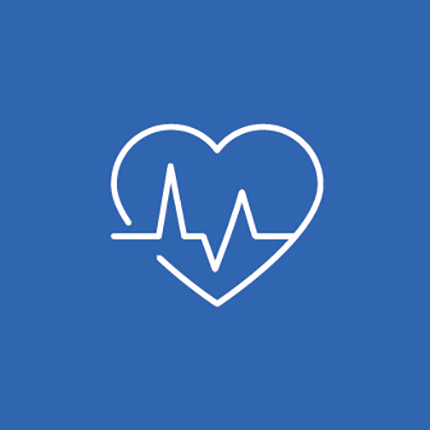Common Heart Conditions
Jan 5, 2021The human heart is about the size of a large fist and is responsible for pumping blood throughout the body via a network of blood vessels, such as the arteries, veins and capillaries. The blood carries oxygen and nutrients needed for other organs to work properly and removes carbon dioxide and other wastes through the lungs.
When disease or injury weakens the heart, it is not able to supply enough blood to other organs in the body, making it difficult for them to function normally. Diseases in the nervous or endocrine systems, which control the heart and blood pressure, can also put a strain on the heart, making it harder for the heart to pump blood.
Cardiovascular diseases remain the number one cause of death globally. More people die from cardiovascular diseases annually worldwide than from any other causes.
Despite the alarming statistics, most cardiovascular diseases can be prevented by addressing behavioral risk factors such as smoking, obesity, physical inactivity and alcohol abuse through medically assisted and approved strategies.
People afflicted with cardiovascular disease or other underlying conditions, such as high blood pressure, diabetes or hyperlipidemia should consult with a physician for early detection, lifestyle changes and medication.
Five Common Cardiovascular Diseases
1. Coronary Artery Disease
Coronary artery disease refers to the buildup of plaque within the walls of the arteries that supply the blood to the heart (called coronary arteries) and other parts of the body. This causes limited blood flow to the heart’s muscle. This plaque buildup is made up of deposits of cholesterol and other substances inside the arteries that cause it to narrow over time, partially or totally blocking the blood flow. It can be acute, resulting from a sudden rupture of a plaque and formation of blood clot. Coronary artery disease can weaken the heart muscle over time, which may lead to heart failure. This disease begins in childhood, but preventive measures can help delay its progression.
The first sign of coronary artery disease for many people is a heart attack. Other typical warning signs are:
- Chest pain or discomfort (also called angina)
- Shortness of breath
- Palpitation
- Fatigue
The following steps may help lower the risk of heart attack for people with coronary artery disease:
- Eating a healthier diet that is low in sodium and fat
- Increasing physical activity
- Taking medicines to treat risk factors such as high cholesterol, high blood pressure or an irregular heartbeat
- Surgical procedures to help restore blood flow to the heart
2. Arrhythmia
An arrhythmia refers to the abnormal rate or rhythm of a person’s heartbeat. When the heart beats too early (premature contraction), too quickly (tachycardia), too slowly (bradycardia) or erratically (fibrillation), it cannot pump blood effectively which may cause organs such as the lungs and brain to shut down.
Arrhythmias can be either harmless or life-threatening, and medical intervention may be required to restore a normal heart rhythm. An arrhythmia occurs when the heart’s natural pacemaker develops an abnormal rate or rhythm. The normal conduction pathway is interrupted, and another part of the heart takes over as a pacemaker. Symptoms include:
- Fast or slow heartbeat
- Skipping beats
- Lightheadedness or dizziness
- Chest pain
- Shortness of breath
- Sweating
Arrhythmia treatment can help control your heart rate and therefore reduce some risk factors for heart disease and stroke. Options for treatment include lifestyle modifications, monitoring and medication. If other treatments are not enough to treat arrhythmia, minor procedure or surgery may be required such as a:
- Pacemaker implant – a device that uses electrical pulses to prompt the heart to beat at a normal rate.
- Implantable cardioverter defibrillator (ICD) – a device that monitors heart rhythms and can act as a pacemaker and a defibrillator.
- Cardiac ablation – a minor surgery that uses a series of catheters to correct the heart’s irregular beat. This procedure typically takes 3-6 hours and may be done under general anesthesia.
3. Heart Failure
Heart failure, sometimes called congestive heart failure, is a chronic and progressive condition wherein the heart cannot meet the body’s demand for blood and oxygen. With heart failure, the weakened heart cannot supply the cells with enough blood for the body to function normally. To keep up with the workload, the heart stretches to contract more strongly in order to pump more blood. This causes the heart to become enlarged and develop more muscle mass, increasing the heart’s output initially. The body will then divert blood away from less important tissues and organs like the kidneys. Eventually, these temporary measures will no longer be enough. Symptoms of a heart failure include:
- Shortness of breath
- Fatigue
- Swelling of the feet, ankles, legs, abdomen or neck veins
- Difficulty in doing everyday activities, such as walking, climbing the stairs or carrying groceries
Although heart failure usually has no cure, most people diagnosed with this disease can learn to manage the symptoms through lifestyle changes and medications:
- Angiotensin-Converting Enzyme (ACE) Inhibitors
- Angiotensin II Receptor Blockers (or Inhibitors)
- Angiotensin-Receptor Neprilysin Inhibitors (ARNIs)
- If Channel Blocker (or inhibitor)
- Beta Blockers (also known as Beta-Adrenergic Blocking Agents)
- Aldosterone Antagonists
- Hydralazine and isosorbide dinitrate (specifically benefits African-Americans with heart failure)
- Diuretics (also known as water pills)
4. Peripheral Artery Disease
Peripheral artery disease occurs when the arteries that carry blood from the heart to the outside regions of the body become narrow or blocked. It affects the arteries in the legs, stomach, arms and head. Like coronary artery disease, peripheral artery disease is caused by atherosclerosis, a process that narrows and blocks arteries in critical regions of the body. The most common symptoms of this disease are:
- Cramping
- Pain or tiredness in the leg or hip muscles while walking or climbing stairs that gets better after rest
Because other health conditions and disorders of the arteries can mimic its symptoms, many people mistake peripheral artery disease for something else and therefore it can go undiagnosed by healthcare professionals. Having peripheral artery disease increases the risk of developing coronary artery disease and cerebrovascular disease, which could lead to a heart attack or stroke. If left untreated, it can also lead to gangrene and amputation.
Peripheral artery disease is easily diagnosed through ankle brachial index, a non-invasive test that measures the blood pressure in the ankles, which is then compared to the blood pressure in the arms at rest and after exercise. Aside from subscribing to a healthy lifestyle, people with this disease have the following treatment options:
- A cardiologist may prescribe aspirin or other similar antiplatelet medicines to prevent serious complications, as well as medicines to reduce blood cholesterol
- Surgery to bypass blocked arteries
5. Valve Disease
The heart has four valves namely, the tricuspid, pulmonary, mitral and aortic valves. These valves have tissue flaps that make sure blood flows correctly throughout the heart’s four chambers and to the rest of the body. Heart valve disease occurs if one or more of these valves do not function well.
Symptoms differ from one person to another. Some people may display no symptom at all while others experience noticeable symptoms and can develop very quickly if the condition is severe. Some physical signs of heart valve disease can include:
- Chest pain or palpitations (rapid rhythms or skips)
- Shortness of breath, fatigue, weakness or inability to maintain regular activity level
- Lightheadedness or fainting
- Swollen ankles, feet or abdomen
For some people, heart valve disease progresses very slowly, and so symptoms are barely noticeable.
At present, there is no known cure for heart valve disease. Lifestyle changes and medicines can treat symptoms and delay its progression for many years. A person with heart valve disease may eventually consult a heart surgeon to replace or repair a malfunctioning heart valve by:
- Adding tissue to patch holes or tears or to increase the support at the base of the valve
- Removing or reshaping tissue so the valve can close tighter
- Separating fused valve flaps
If you are at risk of developing cardiovascular disease, seek medical attention immediately or schedule a screening to confirm diagnosis. Please do not delay care.
Sources:
World Health Organization
American Heart Association
Centers for Disease Control and Prevention
National Heart, Lung, and Blood Institute
MedlinePlus



